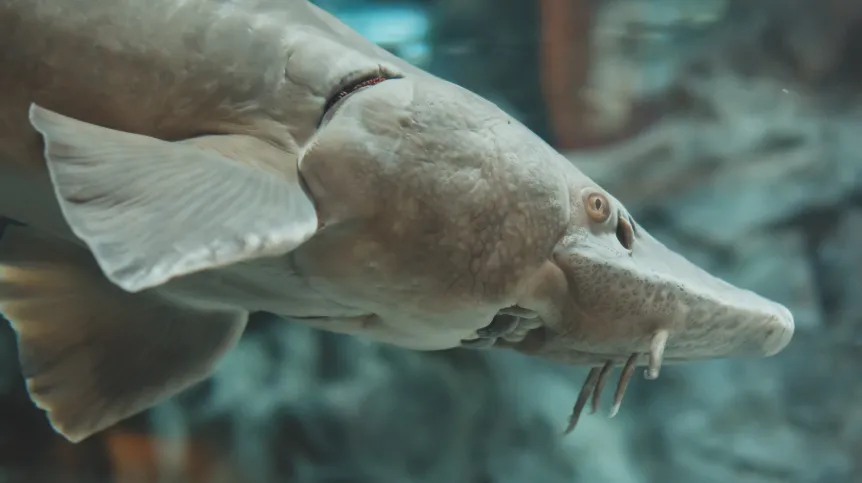
A whopping 5,000 Baltic sturgeon fry were released into the Drawa River this autumn by employees of the Drawa National Park together and their colleagues from Germany. This is part of a program to restore the population Baltic sturgeon fry which was considered ‘extinct’.
According to the Drawa National Park (DPN), the released fry come from fish stock from the St. John River in North America (a 724 km-long river whose springs are in the Appalachians; it flows through the US state of Maine and the Canadian province of New Brunswick into the Bay of Fundy). The Atlantic sturgeons (Acipenser oxyrinchus) that live there are genetically similar to the extinct Baltic sturgeon.
The Drawa National Park does not breed these fish, but cooperates with other units, such as the Stanisław Sakowicz Inland Fisheries Institute - National Research Institute in Olsztyn and the German Leibniz Institute of Freshwater Ecology and Inland Fisheries in Berlin (Leibniz-Institut für Gewässerökologie und Binnenfischerei - IGB). The researchers want to restore the sturgeon population in the Baltic Sea catchment area.
Thanks to the cooperation of Polish and German institutes, at the end of October this year the Drawa National Park was able to implement an active protection measure consisting in stocking the Drawa River with sturgeon.
'Employees of the Drawa National Park together with colleagues from Germany released 5,000 Baltic sturgeon fry into the natural environment, hoping that some of them will survive to adulthood, spawn and thus pass on their genes to the next generation,’ the DPN reports.
Sturgeon is a migratory, anadromous species (Greek 'ana' - up, 'dromos' - running; pulling against the current), which means that it spends most of its life in sea waters, but to reproduce it returns to its mother rivers, where it spawned.
'Fry released into the Drawa will most likely migrate, flowing with the current down the Drawa to the Noteć, then to the Warta, then to the Odra. Then the fish will most likely spend two to six years in brachic waters (a mixture of fresh river waters and salty sea waters in estuary areas - PAP), and then they will finally swim to the Baltic Sea,’ DPN director Dr. Paweł Bilski told PAP.
After a period spent in the sea, which can last up to 20 years, adult sturgeons will return to the river in which they spawned or were released as fry.
Due to the fact that some sturgeon remains date back to the Jurassic, the fish is considered a living fossil. The term 'living fossil' was coined by Charles Darwin to describe a species that - despite millions of years of existence - retains archaic body structure features.
The first traces of sturgeon presence in the Baltic Sea date back to the early Neolithic (5,000 years ago), while the population inhabiting the St. John River probably originated 9,000 years ago.
Over the last centuries, the population size of this species in the Baltic Sea basin has decreased dramatically. 'Consequently, in the second half of the 20th century, this species was considered extinct in the Baltic Sea basin countries,’ the DPN reports.
'Besides anthropogenic changes to rivers such as channelization (associated to habitat loss and reduced river productivity and diversity), the construction of hydrodams (which block the upstream migration to spawning sites and in cases where upstream migration is possible impact the downstream migration of adults and juveniles), and pollution (with major impacts mostly on the early life phases), overfishing has been identified to be the key impact that caused the dramatic decline of the population in the Baltic Sea area,’ say the authors of the Baltic Marine Environment Protection Commission (Helsinki Commission - HELCOM) Action Plan for the Protection and Recovery of the Baltic Sturgeon (Acipenser oxyrinchus) for the period of 2019-2029.
The last Baltic sturgeons in Poland were recorded in 1965 in the lower Vistula, near Chełmno and in the mouth of the Vistula in 1971. (PAP)
PAP - Science in Poland, Magdalena Barcz
bar/ agt/
tr. RL













